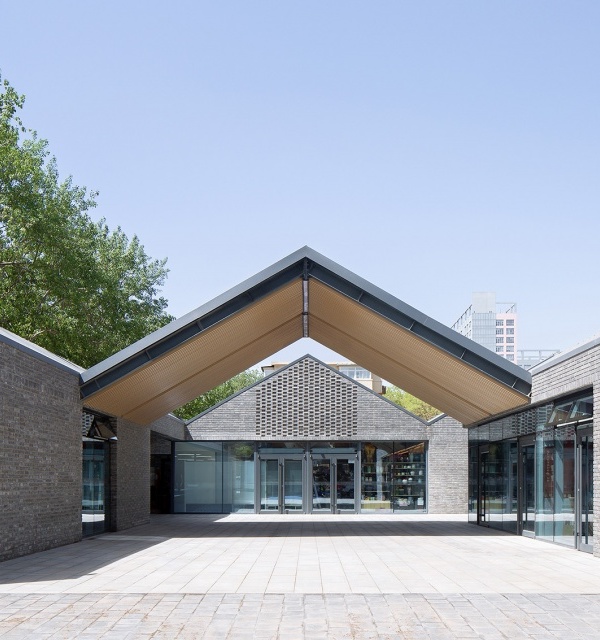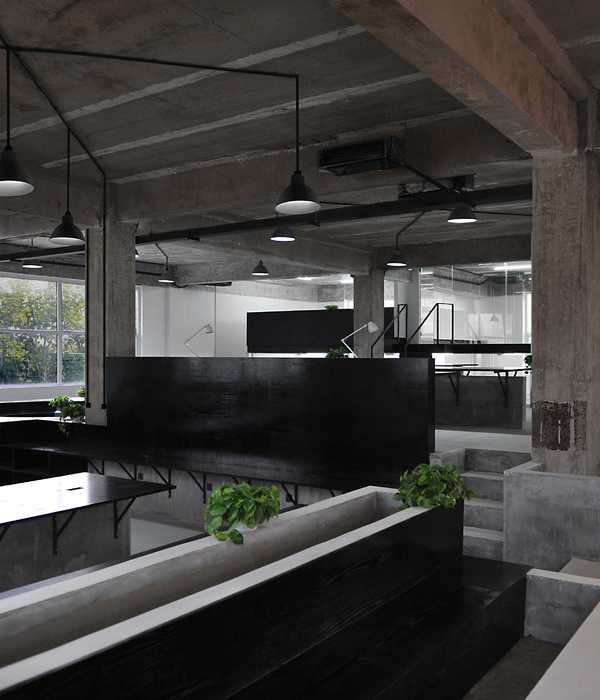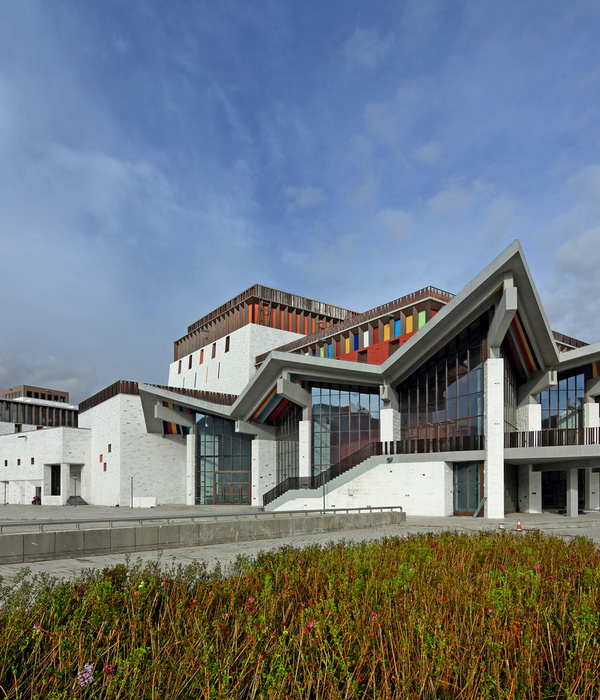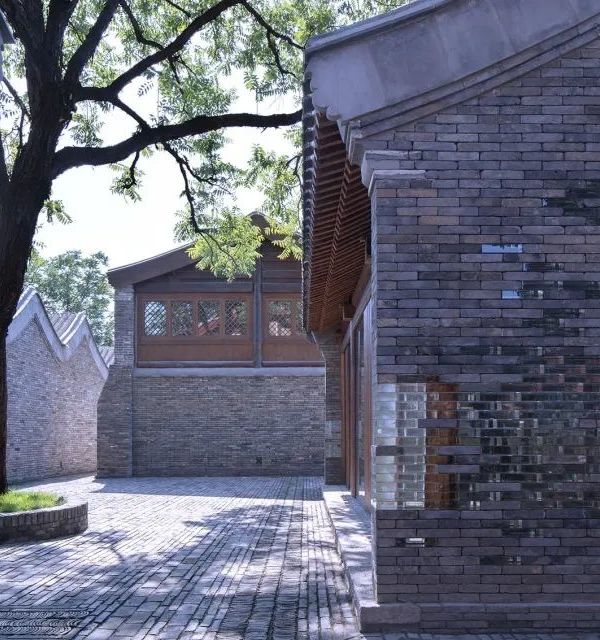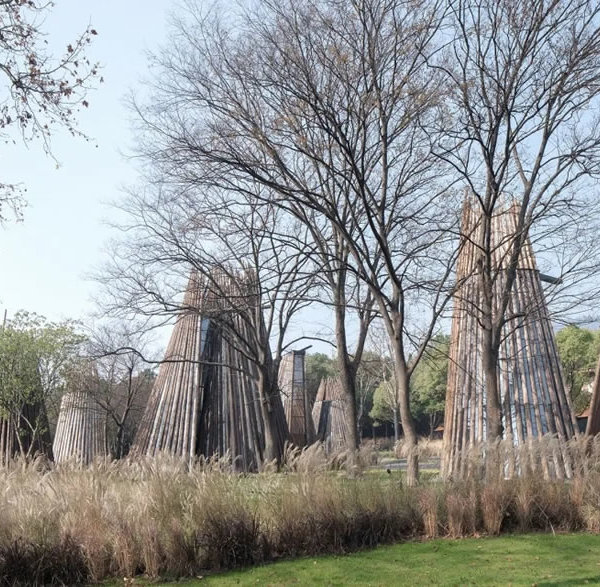▲
关注
“
搜建筑
”
这座独特的建筑位于贝鲁特的博物馆区,是一个具有环保意识的结构,与周围的环境相呼应,是第一国家银行总部的所在地。该建筑位于靠近贝鲁特国家博物馆的中心位置,以及许多重要的企业和政府建筑。在这里,Raed Abillama建筑事务所创建了一个突出的建筑,强调了对周围城市的透明度和开放性,同时响应必要的环境需求和优化空间性能。
This distinctive building in Beirut’s museum district is designed as an environmentally conscious structure that responds to its surrounding context, housing the headquarters for the First National Bank. The building sits on a central site close to the National Museum of Beirut, as well as many key corporate and governmental buildings. Here, Raed Abillama Architects created a prominent building that highlights transparency and openness to the city around it, while responding to necessary environmental needs and optimizing the spatial performance.
建筑体量由两个主塔组成,每层由玻璃循环“桥”连接。根据太阳的运动和建筑不同部分的自然景观,塔楼被小心地定位。建筑在现场的位置也与周边地块形成了敏感的关系,尽量减少周边的空白立面,并整合一个后花园,使周围不同的地块受益。
The building’s massing is composed of two main towers connected at each level by a glazed circulation ‘bridge’. The towers are carefully positioned according to the movement of the sun and the nature of the views from the different parts of the building. The building’s position on-site also factors in a sensitive relationship to the neighboring plots, minimizing blank facades on the periphery, and integrating a back garden that benefits the different surrounding plots.
整个设计方法的一个重要元素是作为第二层皮肤的遮阳系统的开发。定制的外墙元素形成了这种格子状的防晒霜,由玻璃纤维增强混凝土(GRC)制成,漂浮在建筑本身的玻璃表面。这些菱形的百叶窗被选择性地放置,与白天太阳的运动相关联,有助于控制室内温度,减少能源密集型人工制冷的需要。
A vital element of the overall design approach is the development of a sun shading system as a second skin. The bespoke façade elements that form this latticed sunscreen are made of Glassfibre Reinforced Concrete (GRC) and float upon the glass surface of the building itself. These lozenge-shaped louvers were selectively placed to correlate with the movement of the sun through the day, helping to control the temperature of the interiors and reduce the need for energy-intensive artificial cooling.
外墙的设计是通过计算机建模的迭代过程开发的,重点是结构的几何和形式分析,以及由此产生的阴影分析及其对银行内部空间的影响。因此,设计了四种特定类型的百叶模块,每一种都有不同的角度和深度,以响应不同的开放或遮阳需求。
不同类型的模块分布在立面上的测试模式,以最佳地优化不同级别的内部舒适度。结构玻璃竖框用于统一的玻璃系统和百叶窗的支撑。这个简化的系统提供了所有组件的无缝出现。
The design of the façade was developed through an iterative process of computer modeling focusing on geometrical and formal analysis of the structure, and the resulting shade analysis with its impact on the interior spaces of the bank. Accordingly, four specific types of louver modules were developed, each with a varying angle and depth, responding to different needs of openness or shading. The different types of modules were distributed than on the façade in a tested pattern that best optimizes the interior comfort of the different levels. The structural glazing mullions were used for both a unitized glass system as well as the support of the louvers. This simplified system provides a seamless emergence of all components.
这个被动的外墙是总部采用的广泛的环境响应措施组合中最重要的元素之一。景观设计和种植是关键问题,引入了绿色屋顶、梯田和周边的树木和灌木,使用本地物种,灌溉需求最小。景观梯田和屋顶在建筑的多个层面上被整合,为银行员工提供了一个环境和可访问的户外空间。
建筑物后部的模块化种植系统,作为绿色墙体,参考主要的百叶窗结构,有助于提供与邻近建筑的隐私,同时增加了绿色植物的调色板。广泛的种植有助于改善用户的健康和空气质量,这种想法也贯穿于建筑的内部,在所有楼层都设有室内种植槽。
This passive façade is one of the most important elements within an extensive portfolio of environmentally responsive measures applied to the headquarters. Landscaping and planting were key concerns, with the introduction of green roofs, terraces and peripheral trees and shrubs using native species with minimal water irrigation needs. Landscaped terraces and roofs are integrated at multiple levels in the building, providing an ambient and accessible outdoor space to the bank employees. A modular planting system to the rear of the building, functioning as a green wall and referencing the main louver structure, helps to provide privacy from neighboring buildings while adding to the palette of greenery. The extensive planting helps to improve both user well-being and air quality, with this thinking also carried through to the interiors of the building that feature indoor planters on all levels.
塔楼本身安排了超过11层的主要楼层,在一个整体灵活的楼层计划,以适应银行的预期增长。零售分支位于地面和夹层,而自助餐厅位于建筑相邻的基地,前面是一个灵活的画廊空间,可以用于各种文化或社会活动。楼上的办公室穿插着会议室、公共空间和礼堂,在一个建筑内提供了灵活的功能和可能性。
此外,地下8层为服务和停车提供了隐蔽的空间,增加了支持私人和公共停车场的容量。进入建筑的通道经过优化和细分,通过各种交通核心,电梯和防火楼梯在地面层相遇,公共交通通往停车场层,私人通道控制的交通通往顶层。银行的高层通过玻璃浮动楼梯连接,在视觉上直接连接银行楼层。
The towers themselves have arranged over eleven principal storeys, within an overall flexible floor plan that accommodates the projected growth of the bank. A retail branch is located at the ground and mezzanine levels, while a cafeteria sits at the adjacent base of the building fronted by a flexible gallery space that can be used for various cultural or social events. The offices on the floors above are punctuated with meeting rooms, common spaces, and an auditorium, offering a flexible range of functions and possibilities within one building. In addition, eight underground levels provide discreet spaces for services and parking with increased capacity to support private and public car parks. Access to the building is optimized and subdivided through various circulation cores of elevators and fire-rated staircases that meet at the ground level, with public circulation leading down to the parking levels, and private access-controlled circulation leading to the top floors. The higher levels of the bank are additionally connected via a glass floating staircase that allows a visual and direct link between the banking floors.
平面图
立面图
剖面图
设计构思
模型图
绿植模块墙
建筑师:Raed Abillama Architects
地点:黎巴嫩
面积:17030 m²
年份:2019
推荐关注·专业平台
本资料声明:
1.本文为建筑设计技术分析,仅供欣赏学习。
2.本资料为要约邀请,不视为要约,所有政府、政策信息均来源于官方披露信息,具体以实物、政府主管部门批准文件及买卖双方签订的商品房买卖合同约定为准。如有变化恕不另行通知。
3.因编辑需要,文字和图片无必然联系,仅供读者参考;
—— 作品展示、
访谈、
招聘
——
搜建筑·矩阵平台
合作、宣传、投稿
请加
推荐一个
专业的地产+建筑平台
每天都有新内容
{{item.text_origin}}

